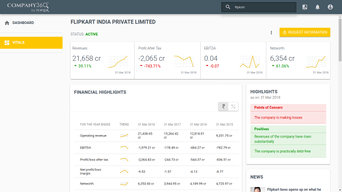Financial Terms
Investors, analysts, businesses, and even those who love reading financial news must be aware of basic financial terminology. In order to have a better understanding of what you are hearing in the market news or reading in finance reports by referring to a finance glossary. With this, you will have a better understanding of what they mean for a company.
Here are some of the most important Financial terms & concept:
1) Efficiency Ratio
Efficiency ratios indicate the ability of a business to use its assets and liabilities for generating sales. An organization that is highly efficient would have minimized its net investment in assets.
2) Balance Sheet
A balance sheet reports shareholder’s equity, liabilities, and assets of a business at a given point. It is one of the major financial statements utilized by business owners and accountants.
3) Debt-to-Equity Ratio
The debt-to-Equity (D/E) ratio is used to assess a company’s financial standing. It is a measure of the relative contribution of shareholders and creditors in the capital employed in the business.
4) Liquidity Ratio
A liquidity ratio indicates the ability of an organization to the stakeholders as and when it comes due. In general, liquidity ratios measure liquidity and these ratios are short-term in nature.
5) Profit and Loss
A Profit and Loss statement or account is popularly referred to as a P&L statement, Statement of Earnings, or Statement of Operations. It provides detailed insight on the revenue of a company for a given time period, tax and depreciation, earning per share number, and expenses incurred to generate the revenue.
6) Profitability Ratios
Profitability Ratios are metrics used to assess the profit potential of a business relative to its operating costs, sales revenue, balance sheet, assets, and shareholders' equity.
7) Ratio Analysis
Ratio analysis is a quantitative analysis done to ascertain the financial performance of a company. It provides detailed insight into the company’s profitability, operational efficiency, liquidity, debt, market solvency, and other crucial aspects.
8) Solvency Ratio
Solvency ratios assess the long-term health of a company by evaluating its long term debt and interest accrued on that debt. Solvency ratios are crucial components of financial analysis and assist in determining whether a company has enough cash flow to manage its debt obligation.
9) EBITDA
EBITDA is a metric used to assess a company’s operating performance. Earnings before interest, taxes, depreciation, and amortization, or EBITDA, sometimes acts as an alternative to other metrics, including net income or revenue.
10) Quick Ratio
The quick ratio indicates the short-term liquidity position of a company. It signifies its ability to manage short-term obligations with its liquid assets.
11) Capital Structure
Capital Structure is a specific combination of debt and equity of a company required to fund its overall growth and operations. Short-term debts are often considered an integral part of the capital structure.
12) Net Worth
Net worth refers to the value of everything that you own and comprises both financial and non-financial assets. It primarily serves as an indicator of your financial health.
13) Current Ratio
The current ratio is one of the several liquidity ratios used in studying the ability of a company to meet its short-term obligations. The current ratio is also commonly referred to as the working capital ratio.
14) Interest Coverage Ratio
The interest coverage ratio determines the ability of a company to pay off its debts. Creditors use this ratio to determine the financial health of a company.
15) Assets
An asset is something that holds an economic value and can be converted into cash whenever required. Assets play a crucial role in ensuring the profitability of a business or its viability in the long-term.
16) Accounts Payable
Accounts Payable and its management are crucial for any business. It refers to the amount owed by an entity to its suppliers or vendors for the goods or services availed.
17) Liabilities
Liability refers to the obligations of a company to a supplier, lender, bank, or other providers of goods, services, or loans. It requires an entity to give up a part of its economic benefit for settling past events or transactions.
18) Revenue
Revenue refers to the income of a company that it receives from its day-to-day business operations. On the income statement, revenue is also referred to as sales.
In summary:
Having an understanding of financial terms and meaning is crucial if you encounter them on a day to day basis. Being aware of the common financial terms will help you carry out an accurate analysis of the financial markets. Knowing financial terms' meaning and why it is being used will help you understand how it affects the stock prices and the financial market. You can always refer to a finance dictionary if you are not aware of the actual meaning of any term you come across.
Company360 plans

Know more about your vendors, clients and competitors.
Financials, scores, ratios, excels, reports and more.
@ INR 9000/quarter